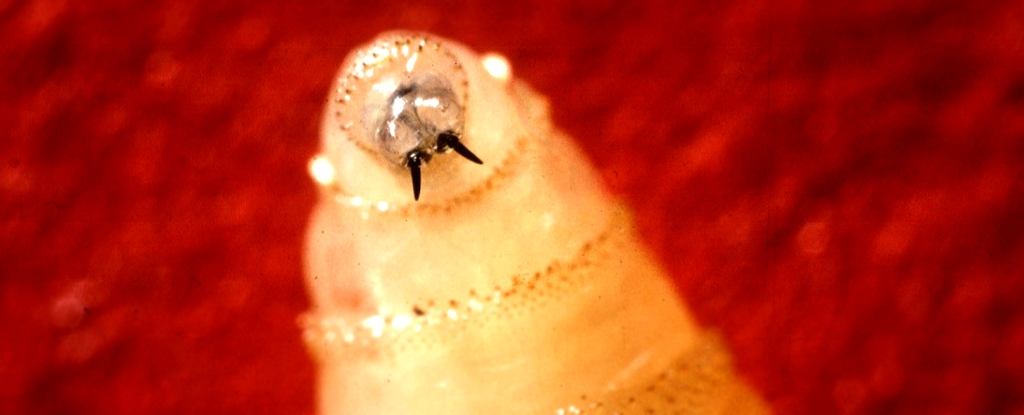
A rare case of a flesh-eating parasite has been confirmed in the United States for the first time in decades. A woman from Maryland recently returned from a trip to Central America, where she likely encountered the New World screwworm fly (Cochliomyia hominivorax). Fortunately, the patient has recovered, and the US Department of Health and Human Services has indicated that the risk of further human transmission remains “very low.” Nonetheless, the parasite’s potential to threaten food security in the U.S. cannot be overlooked.
Screwworm infections occur when the larvae of screwworm flies infest warm-blooded animals by laying eggs in open wounds or vulnerable areas like the navel or eyes. The larvae consume living tissue, which can lead to severe damage. Infectious disease specialist Daniel Griffin described the devastation caused by these maggots, stating that they can turn “living tissue into Swiss cheese.” If left untreated, these infections can lead to fatal outcomes.
Historically, the primary victims of screwworm infestations have been livestock, particularly cattle, horses, and pigs. However, infections can also affect pets, including dogs and cats, and, in rare cases, humans. The larvae act quickly; within a week, they can kill a mature cow. A potential outbreak in Texas, the U.S.’s largest cattle-producing state, could incur costs of approximately $1.8 billion, according to the US Department of Agriculture.
Historical Context and Recent Developments
In the 1950s, the U.S. and several Central American nations attempted to eradicate screwworms through a program that released lab-bred sterile insects to breed with wild populations. This strategy was largely successful, and the last endemic infection in the U.S. was reported in 1982. While isolated cases have occurred when travelers returned with the worms, a resurgence of the New World infection has emerged in regions where it was previously eradicated, raising concerns about public health, food security, and the livelihoods of ranchers.
Since early 2023, Central America has seen hundreds of human cases reported in Nicaragua and Costa Rica, some of which required urgent medical attention. Ricardo Somarriba, director of Nicaragua’s Institute for Agricultural Protection and Health, highlighted the severity of the situation, stating, “If those worms hadn’t been removed, they would have destroyed their brain.”
The recent case in Maryland serves as a stark reminder of the need for international collaboration to monitor and manage the spread of such dangerous infections. The impact of the screwworm flies extends beyond individual health, threatening agriculture and food supply chains. Vigilance and proactive measures are essential to prevent further outbreaks and protect both human and animal populations.






